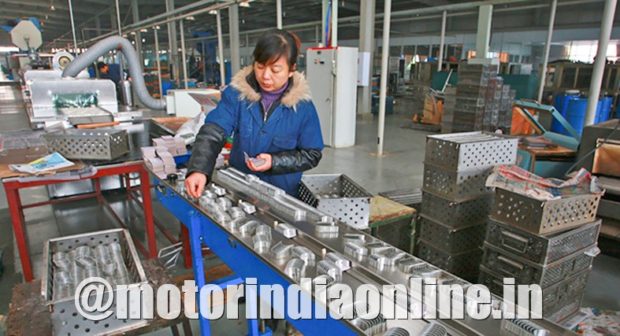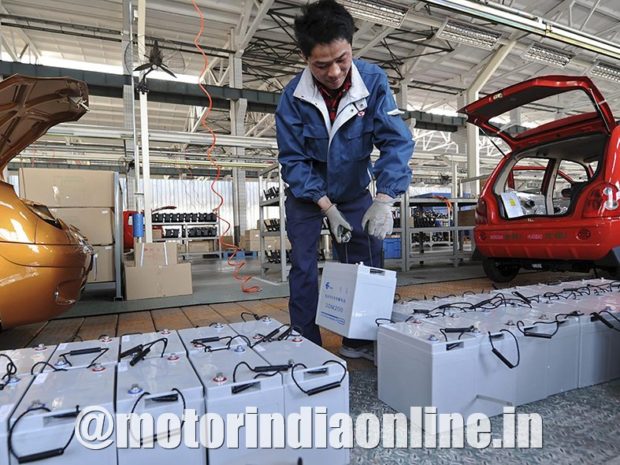The current pandemic has clearly indicated that India does have the ability to undertake a higher percentage of indigenous manufacturing. As such, isn’t this the right time to start cutting down imports from China and boost local industry, suggests P V Balasubramaniam, Former Director and CEO, York Transport Equipment (Asia) Pte. Ltd., Singapore

The corona virus pandemic is a wakeup call for India to question our trade policy. Let us discuss one aspect of it – the dependence on China. During January and February 2020, while China underwent a lockdown, the worry for India Inc. was sourcing the supply of parts and components for automotive, pharmaceuticals, chemicals, mobile phones, white goods, etc. Industries on average have 25-45% dependence on China for parts or raw material (RM) supply, and in some cases, almost 100%. Certainly, we cannot let this continue. Based on my experience in international business and working with China, I believe that we can substitute import with local supply and compete with China globally.
India-China Trade
Let us look at the data first, all from Directorate General of Foreign Trade (DGFT). Over the last 12 years, import from China has increased from USD 27.1 billion in 2007-08 to USD 70 billion in 2018-19. During the same period, India’s exports to China moved from USD 10.87 to USD 17.65 billion. Trade deficit widened from USD 16.29 to USD 53.56 billion during this period. And India Inc. seems to be happy so long as China can supply! On September 28, 2019, while the Regional Comprehensive Economic Partnership (CEP) negotiation was going on, it was reported in Economic Times, “India may cut or eliminate tariffs on 80% of products imported from China.”
Imagine that this was when Chinese goods were already flooding India. And later, on February 27, 2020, the Department of Commerce, Government of India, said that it was considering imposing duties on over 100 products that India imports heavily from China in light of the current pandemic. And did we impose duty? No. In fact we are pleading with China for supply. It just shows the predicament we are in, as we have preferred over the years to import rather than develop a local supply chain.
Balance of Trade
The World Development Report 2020, realising the threat to the global value chain (GVC) and move towards nationalism, elaborates the benefits of GVC and how countries have benefitted from it. The justification is that GVC is necessary for a country to boost its export. This is true if much of what we import goes into the manufacture of finished products that we further export. Factually, most of what we import from China is for domestic consumption. A small proportion goes into the export of pharmaceutical products and automobiles.
Further, import from China is predominantly value-added engineering products – electricals, motors and generators, transformers, electronic parts, integrated circuits, transistors, semi-conductors, mobile phone parts, computers, automotive parts, batteries, lamps, solar cells and panels, etc. But India’s export comprises more of commodities rather than value-added items. How do we address this ever-widening trade gap and increasing dependence on China? Our imports work out to a massive USD 70 billion now and this is most likely to increase much faster, unless we act.

The question that arises is why we cannot manufacture this USD 70 billion or even half of it in India? The last five years’ campaigning for ‘Make in India’ has not yielded much investment. It cannot be due to lack of demand as USD 70 billion is staring at us. Maybe India Inc. feels that when you can import easily, why manufacture since as such we may not be competitive. This argument is faulty.
Forex Advantage
The Indian rupee as against the US dollar has depreciated from Rs 45 in 2008 to about Rs 70 in 2019, whereas China’s RMB is still at Rs 6.90 though it had appreciated for a short while in 2012-14 up to Rs 6.15. Thus, if we see the movement of INR versus RMB, the former has depreciated from Rs 6.47 to Rs 10.42 per RMB during this period, which is about 61%. We have experienced massive increase in the cost of importing from China and still we find importing attractive? Moreover, imports attract 10% custom duty. Thus, we have enough protection to match Chinese prices for manufacturing in India.

Points to Note
- Based on long years of experience operating plants in China as well as India, I advise that India Inc. could compete with China by focusing on value engineering, benchmarking costs and productivity improvement while the government should help improve infrastructure and logistics.
- China developed industries during 2000-15 driven by foreign direct investments (FDIs). They imported in early years from global value chains and manufactured for export. But over the years they developed vendors locally and reduced import. Through non-tariff barriers, China forced foreign companies to invest in local manufacture and developed their indigenous industry.
- We have a similar opportunity now with America Inc. and others looking for options beyond China. Let us be aggressive and proactive in attracting investment for local manufacturing to offset the USD 70 billion worth of imports.
- China joining WTO in 2000 was a boon to India Inc. to cut material cost by import. Global supply chain became popular. Companies used reverse auction, consultants and opened office in China to source. This brought huge savings but at the cost of local vendors, many of whom shut business. Since then, volume as well as the cost of import has shot up, as the INR-RMB is so much higher, making it attractive for local vendors. But there are no local vendors.
- The current pandemic makes us realise the potential of India. In a short time, start-ups, MSMEs and large enterprises have rallied to meet the country’s demand for healthcare products. The government has also been approving proposals quickly. We need to show similar urgency to reduce China’s import bill. Scientific institutions and research and development labs in the private and public sector are frantically working on several projects. This augurs well for research in India and gives impetus to development of indigenous technology as increasingly we are also becoming dependent on China for technology.